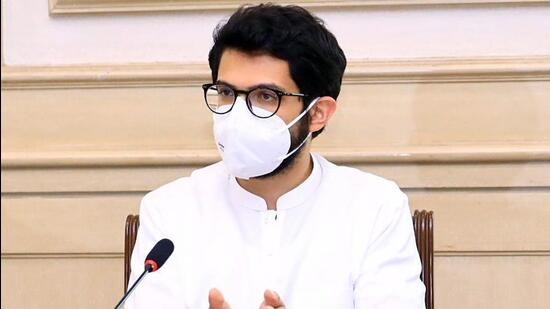Aaditya Thackeray: Every development project in Mumbai needs to undergo climate test
Mumbai: In view of extreme weather conditions in Mumbai and Maharashtra and the number of fatal incidents that have been occurring during the monsoon for the past few years, Maharashtra environment minister Aaditya Thackeray on Thursday said that every development project needs to undergo a climate impact review to determine its long-term impact on the environment at the local level
Mumbai: In view of extreme weather conditions in Mumbai and Maharashtra and the number of fatal incidents that have been occurring during the monsoon for the past few years, Maharashtra environment minister Aaditya Thackeray on Thursday said that every development project needs to undergo a climate impact review to determine its long-term impact on the environment at the local level. He also stressed the need for a single planning authority for Mumbai.

“I think we have come to a point in the development where a climate test needs to be applied for every project coming into our city. Every new development that comes in and that is beyond a certain size needs to apply to us for permission,” said Thackeray who is also guardian minister of suburban Mumbai.
He was speaking at the ‘Flood Risk Mumbai’ workshop, organised jointly by the Brihanmumbai Municipal Corporation (BMC) and World Resources Institute (WRI). The two-day workshop has been organised for the civic staffers from various departments, in order to build a flood-resilient city.
“Coming from a perspective of environment and climate change department, we have expedited the process and have brought down the timeline for hearing to one month now, to ensure that everyone gets a hearing and the projects are not delayed but at the same time, it is equally important that every project needs to be peer-reviewed and seen in the light of a climate test,” Thackeray said.
He also stated that in the past few years, the number of adverse incidents during monsoon has increased exponentially, with cyclones hitting the city for two consecutive years.
“We really cannot predict when it will rain and when severe heat waves may hit our city. This clearly shows that climate change is real and we need to think about adequate mitigation measures for the long run,” he said.
During his speech, Thackeray also highlighted that a single planning authority in Mumbai is of utmost importance in carving out a long-term solution in order to mitigate adverse events like flooding and climate change in Mumbai.
“Over the years, a lot of unplanned development has taken place in the city. Today, before initiating a single road repair project, we need to get on the same page with multiple agencies. Having a single planning authority will expedite the development works steadily and will also help us in keeping sustainable development in the future,” he said.
During the event, P Velrasu, additional municipal commissioner (Projects) stated that in the past few years, the intensity of rainfall during monsoon have increased exponentially leading to severe crisis in the city during monsoon. Velrasu stated that Mumbai has 186 Storm Water Drain (SWD) outfalls, through which sewage water flows into the sea and out of these, only six outfalls are above the High Tide Level (HTL) while 45 outfalls are below sea level and 135 outfalls that are above sea level but below HTL.
“Sewage and water outflow happens smoothly from six outfalls. Outfall is usually slow from the ones that are below HTL and sea-level as water ingression takes place inside the pipelines,” said Velrasu during the event.
“This is the reason why stagnant water is there in Mumbai for longer hours. Mitigating floods entirely during monsoon in Mumbai is both circumstantial and conditional as there are also other technical challenges as well,” he added.
Velrasu also said that 386 chronic flooding spots, out of which 280 spots are being tackled by the BMC and remaining, 106 floods will be taken up for repairs and improvements in the days to come.
Out of these 106 spots, 35 will be tackled this year. “There are several spots in Mumbai that are immensely low lying, which leads to chronic flooding during monsoon. The long-term solution to abate flooding and long duration water logging during monsoon is installing of pumping stations and floodgates and moving the stagnant water out. At present, six pumping stations have already been commissioned and a land acquisition process for the remaining two is in progress,” Velrasu said.
A senior official said, now that the announcement has been made today, a comprehensive plan may be chalked out soon with the state environmental department with an aim to carry out a proper Environmental Impact Assessment (EIA) report and Climate Test before taking up the construction works of a large-scale project in the future at the local level.
At present, the EIA surveys are being carried out either by private agencies or by dedicated state departments like Mangrove Cell and Maharashtra Coastal Zone Management Authorities (MCZMA).
Stay updated with all the Breaking News and Latest News from Mumbai. Click here for comprehensive coverage of top Cities including Bengaluru, Delhi, Hyderabad, and more across India along with Stay informed on the latest happenings in World News.
Stay updated with all the Breaking News and Latest News from Mumbai. Click here for comprehensive coverage of top Cities including Bengaluru, Delhi, Hyderabad, and more across India along with Stay informed on the latest happenings in World News.





